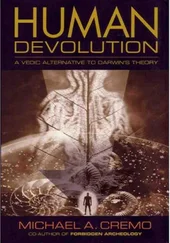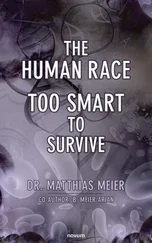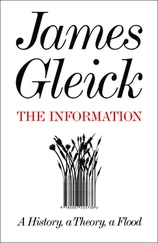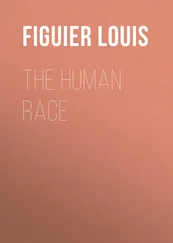Michael Cremo - Forbidden Archeology - The Hidden History of the Human Race
Здесь есть возможность читать онлайн «Michael Cremo - Forbidden Archeology - The Hidden History of the Human Race» весь текст электронной книги совершенно бесплатно (целиком полную версию без сокращений). В некоторых случаях можно слушать аудио, скачать через торрент в формате fb2 и присутствует краткое содержание. Год выпуска: 1992, ISBN: 1992, Издательство: Torchlight Publishing, Жанр: Старинная литература, на английском языке. Описание произведения, (предисловие) а так же отзывы посетителей доступны на портале библиотеки ЛибКат.
- Название:Forbidden Archeology: The Hidden History of the Human Race
- Автор:
- Издательство:Torchlight Publishing
- Жанр:
- Год:1992
- ISBN:9780892132942
- Рейтинг книги:4 / 5. Голосов: 1
-
Избранное:Добавить в избранное
- Отзывы:
-
Ваша оценка:
- 80
- 1
- 2
- 3
- 4
- 5
Forbidden Archeology: The Hidden History of the Human Race: краткое содержание, описание и аннотация
Предлагаем к чтению аннотацию, описание, краткое содержание или предисловие (зависит от того, что написал сам автор книги «Forbidden Archeology: The Hidden History of the Human Race»). Если вы не нашли необходимую информацию о книге — напишите в комментариях, мы постараемся отыскать её.
Forbidden Archeology: The Hidden History of the Human Race — читать онлайн бесплатно полную книгу (весь текст) целиком
Ниже представлен текст книги, разбитый по страницам. Система сохранения места последней прочитанной страницы, позволяет с удобством читать онлайн бесплатно книгу «Forbidden Archeology: The Hidden History of the Human Race», без необходимости каждый раз заново искать на чём Вы остановились. Поставьте закладку, и сможете в любой момент перейти на страницу, на которой закончили чтение.
Интервал:
Закладка:
Forbidden Archeology does not conceal its own positioning on a relativist spectrum of knowledge production. The authors admit to their own sense of place in a knowledge universe with contours derived from personal experience with Vedic philosophy, religious perception, and Indian cosmology. Their intriguing discourse on the “Evidence for Advanced Culture in Distant Ages” is light-years from “normal” Western science, and yet provokes a cohesion of probative thought.
In my view, it is just this openness of subjective positioning that makes Forbidden Archeology an original and important contribution to postmodern scholarly studies now being done in sociology, anthropology, archeology, and the history of science and ideas. The authors’ unique perspective provides postmodern scholars with an invaluable parallax view of historical scientific praxis, debate, and development.
Pierce J. Flynn, Ph.D.
Department of Arts and Sciences
California State University, San Marcos,
Calif., U.S.A.
Introduction and Acknowledgments
In 1979, researchers at the Laetoli, Tanzania, site in East Africa discovered footprints in volcanic ash deposits over 3.6 million years old. Mary Leakey and others said the prints were indistinguishable from those of modern humans. To these scientists, this meant only that the human ancestors of 3.6 million years ago had remarkably modern feet. But according to other scientists, such as physical anthropologist R. H. Tuttle of the University of Chicago, fossil bones of the known australopithecines of 3.6 million years ago show they had feet that were distinctly apelike. Hence they were incompatible with the Laetoli prints. In an article in the March 1990 issue of Natural History, Tuttle confessed that “we are left with somewhat of a mystery.” It seems permissible, therefore, to consider a possibility neither Tuttle nor Leakey mentioned—that creatures with anatomically modern human bodies to match their anatomically modern human feet existed some 3.6 million years ago in East Africa. Perhaps, as suggested in the illustration on the opposite page, they coexisted with more apelike creatures. As intriguing as this archeological possibility may be, current ideas about human evolution forbid it.
Knowledgeable persons will warn against positing the existence of anatomically modern humans millions of years ago on the slim basis of the Laetoli footprints. But there is further evidence. Over the past few decades, scientists in Africa have uncovered fossil bones that look remarkably human. In 1965, Bryan Patterson and W. W. Howells found a surprisingly modern humerus (upper arm bone) at Kanapoi, Kenya. Scientists judged the humerus to be over 4 million years old. Henry M. McHenry and Robert S. Corruccini of the University of California said the Kanapoi humerus was “barely distinguishable from modern Homo. ” Similarly, Richard Leakey said the ER 1481 femur (thighbone) from Lake Turkana, Kenya, found in 1972, was indistinguishable from that of modern humans. Scientists normally assign the ER 1481 femur, which is about 2 million years old, to prehuman Homo habilis. But since the ER 1481 femur was found by itself, one cannot rule out the possibility that the rest of the skeleton was also anatomically modern. Interestingly enough, in 1913 the German scientist Hans Reck found at Olduvai Gorge, Tanzania, a complete anatomically modern human skeleton in strata over 1 million years old, inspiring decades of controversy.
Here again, some will caution us not to set a few isolated and controversial examples against the overwhelming amount of noncontroversial evidence showing that anatomically modern humans evolved from more apelike creatures fairly recently—about 100,000 years ago, in Africa, and, in the view of some, in other parts of the world as well.
But it turns out we have not exhausted our resources with the Laetoli footprints, the Kanapoi humerus, and the ER 1481 femur. Over the past eight years, Richard Thompson and I, with the assistance of our researcher Stephen Bernath, have amassed an extensive body of evidence that calls into question current theories of human evolution. Some of this evidence, like the Laetoli footprints, is fairly recent. But much of it was reported by scientists in the nineteenth and early twentieth centuries. And as you can see, our discussion of this evidence fills up quite a large book.
Without even looking at this older body of evidence, some will assume that there must be something wrong with it—that it was properly disposed of by scientists long ago, for very good reasons. Richard and I have looked rather deeply into that possibility. We have concluded, however, that the quality of this controversial evidence is no better or worse than the supposedly noncontroversial evidence usually cited in favor of current views about human evolution.
But Forbidden Archeology is more than a well-documented catalog of unusual facts. It is also a sociological, philosophical, and historical critique of the scientific method, as applied to the question of human origins and antiquity.
We are not sociologists, but our approach in some ways resembles that taken by practitioners of the sociology of scientific knowledge (SSK), such as Steve Woolgar, Trevor Pinch, Michael Mulkay, Harry Collins, Bruno Latour, and Michael Lynch.
Each of these scholars has a unique perspective on SSK, but they would all probably agree with the following programmatic statement. Scientists’ conclusions do not identically correspond to states and processes of an objective natural reality. Instead, such conclusions reflect the real social processes of scientists as much as, more than, or even rather than what goes on in nature.
The critical approach we take in Forbidden Archeology also resembles that taken by philosophers of science such as Paul Feyerabend, who holds that science has attained too privileged a position in the intellectual field, and by historians of science such as J. S. Rudwick, who has explored in detail the nature of scientific controversy. As does Rudwick in The Great Devonian Controversy, we use narrative to present our material, which encompasses not one controversy but many controversies—controversies long resolved, controversies as yet unresolved, and controversies now in the making. This has necessitated extensive quoting from primary and secondary sources, and giving rather detailed accounts of the twists and turns of complex paleoanthropological debates.
For those working in disciplines connected with human origins and antiquity, Forbidden Archeology provides a well-documented compendium of re ports absent from many current references and not otherwise easily obtainable.
One of the last authors to discuss the kind of reports found in Forbidden Archeology was Marcellin Boule. In his book Fossil Men (1957) , Boule gave a decidedly negative review. But upon examining the original reports, we found Boule’s total skepticism unjustified. In Forbidden Archeology, we provide primary source material that will allow modern readers to form their own opinions about the evidence Boule dismissed. We also introduce a great many cases that Boule neglected to mention.
From the evidence we have gathered, we conclude, sometimes in language devoid of ritual tentativeness, that the now-dominant assumptions about human origins are in need of drastic revision. We also find that a process of knowledge filtration has left current workers with a radically incomplete collection of facts.
We anticipate that many workers will take Forbidden Archeology as an invitation to productive discourse on (1) the nature and treatment of evidence in the field of human origins and (2) the conclusions that can most reasonably drawn from this evidence.
Читать дальшеИнтервал:
Закладка:
Похожие книги на «Forbidden Archeology: The Hidden History of the Human Race»
Представляем Вашему вниманию похожие книги на «Forbidden Archeology: The Hidden History of the Human Race» списком для выбора. Мы отобрали схожую по названию и смыслу литературу в надежде предоставить читателям больше вариантов отыскать новые, интересные, ещё непрочитанные произведения.
Обсуждение, отзывы о книге «Forbidden Archeology: The Hidden History of the Human Race» и просто собственные мнения читателей. Оставьте ваши комментарии, напишите, что Вы думаете о произведении, его смысле или главных героях. Укажите что конкретно понравилось, а что нет, и почему Вы так считаете.












